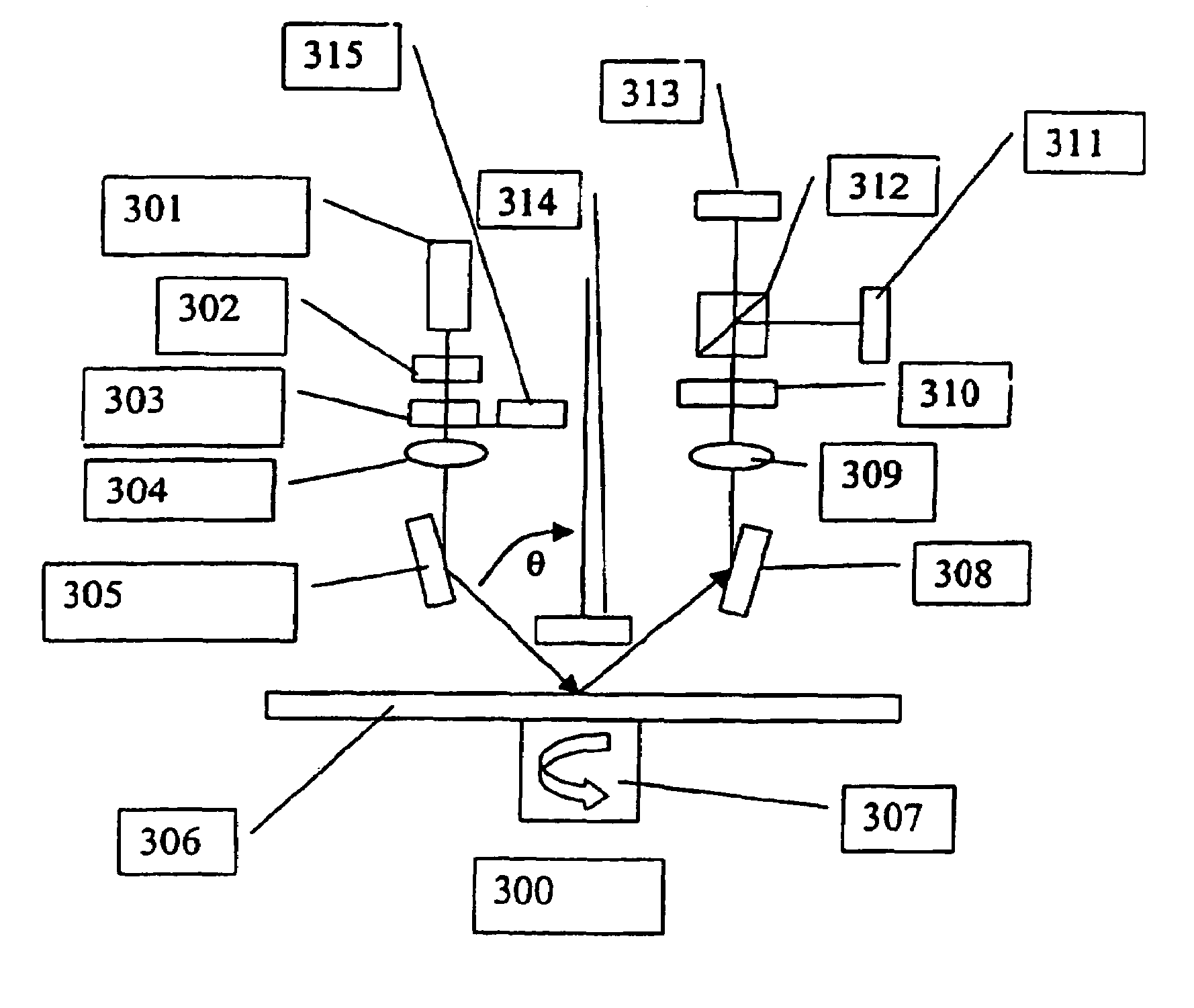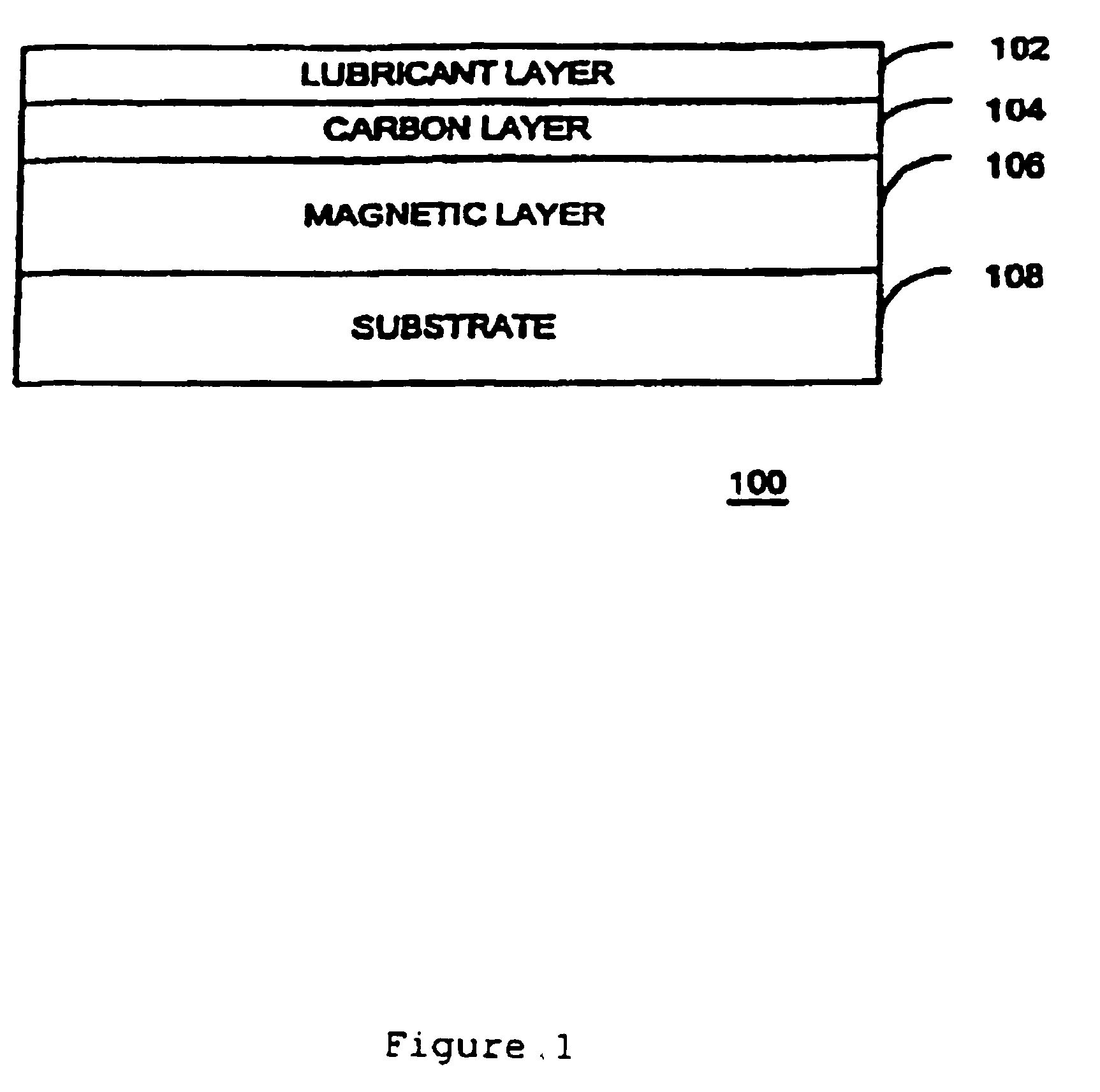Wide spatial frequency topography and roughness measurement
a topography and spatial frequency technology, applied in the field of wide spatial frequency topography and roughness measurement, can solve the problems of failure of a hard disk, high cost, and inability to retrieve data,
- Summary
- Abstract
- Description
- Claims
- Application Information
AI Technical Summary
Benefits of technology
Problems solved by technology
Method used
Image
Examples
Embodiment Construction
[0030]A preferred embodiment of the present invention is now described with reference to the figures where like reference numbers indicate identical or functionally similar elements. Also in the figures, the left most digit(s) of each reference number correspond(s) to the figure in which the reference number is first used.
[0031]FIG. 3 is an illustration of an apparatus for measuring properties of the thin film according to an embodiment of the present invention. The apparatus uses a focused laser light signal whose angle of propagation θ (as shown in FIG. 3) can be between zero degrees from normal and ninety degrees from normal.
[0032]One embodiment of the apparatus 300 includes a conventional laser diode 301, e.g., RLD65MZT1 or RLD-78MD available from Rolm Corporation, Kyoto, Japan, which has been collimated by Hoetron Corp., Sunnyvale, Calif., e.g., a conventional linear polarizer 302, e.g., made of Polarcor that is commercially available from Newport Corp., Irvine, Calif., a conve...
PUM
| Property | Measurement | Unit |
|---|---|---|
| thickness | aaaaa | aaaaa |
| angle of propagation | aaaaa | aaaaa |
| angle of propagation | aaaaa | aaaaa |
Abstract
Description
Claims
Application Information
 Login to View More
Login to View More - R&D
- Intellectual Property
- Life Sciences
- Materials
- Tech Scout
- Unparalleled Data Quality
- Higher Quality Content
- 60% Fewer Hallucinations
Browse by: Latest US Patents, China's latest patents, Technical Efficacy Thesaurus, Application Domain, Technology Topic, Popular Technical Reports.
© 2025 PatSnap. All rights reserved.Legal|Privacy policy|Modern Slavery Act Transparency Statement|Sitemap|About US| Contact US: help@patsnap.com



